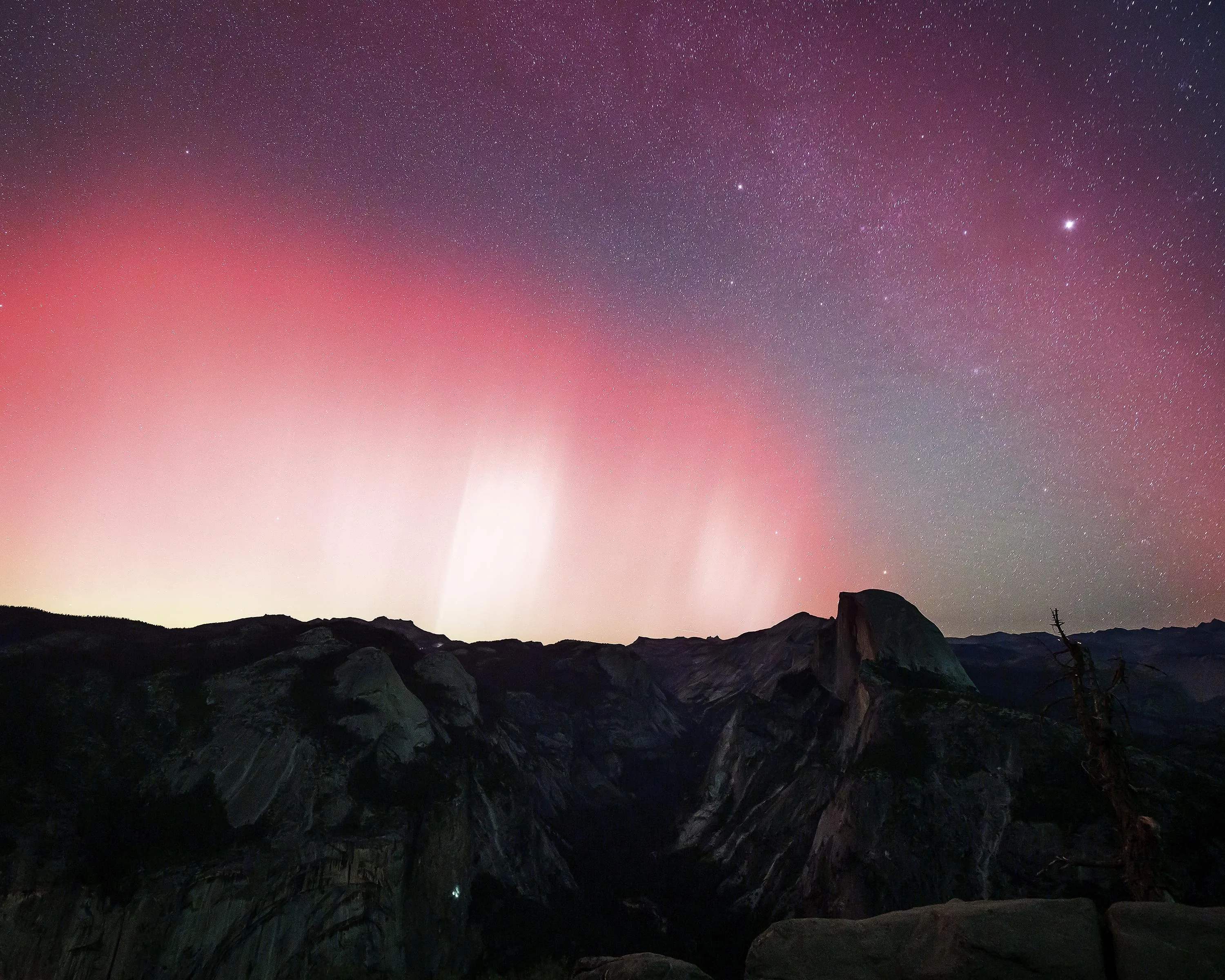Aurora Over Yosemite Valley: A Rare Celestial Dance
Witnessing the aurora borealis is a bucket-list experience for many, typically associated with high-latitude regions like the Arctic Circle. So, when vibrant auroral displays are seen much further south, especially over an iconic American landscape like Yosemite Valley, it's nothing short of extraordinary. The stunning image shared here captures such a rare alignment of celestial events and earthly beauty.

The Celestial Spectacle: Understanding the Aurora
Auroras, often called the Northern or Southern Lights, are a mesmerizing natural light display in Earth's sky. They occur when charged particles from the Sun – primarily electrons and protons – collide with gases in Earth's upper atmosphere. These particles, carried by solar winds and often intensified by solar flares or coronal mass ejections, are funneled towards the poles by Earth's magnetic field. The varying colors, from green to red and purple, depend on the type of gas atoms (oxygen or nitrogen) being excited and the altitude at which the collision occurs. For auroras to be visible in lower latitudes like Yosemite, a particularly strong geomagnetic storm is required, pushing the auroral oval further south.
Yosemite's Unforgettable Night: A Canvas of Earth and Sky
Yosemite Valley, famed for its towering granite cliffs, giant sequoia groves, and cascading waterfalls, is a UNESCO World Heritage site and a photographer's paradise. Its dark skies, away from major urban light pollution, make it an excellent location for stargazing. However, capturing the aurora here is exceptionally rare, turning an already majestic landscape into an ethereal scene painted with cosmic light. The deep valleys and iconic features like El Capitan and Half Dome provide a dramatic terrestrial foreground for the celestial ballet unfolding above.
Mastering the Night Shot: Astrophotography in Action
Capturing such a dynamic and low-light scene requires considerable skill and precise technical execution in astrophotography. The image presented was captured as a single exposure, a testament to the photographer's ability to achieve detail and vibrant color without relying on multiple exposures or focus stacking. The technical specifications reveal a thoughtful approach:
- Camera: Nikon Z8
- Lens: Nikkor Z 14-24mm f/2.8 S @ 14mm
- Aperture: f/3.5
- Shutter Speed: 30 seconds
- ISO: 4000
An aperture of f/3.5, while slightly stopped down from the lens's maximum f/2.8, likely offered a good balance of light gathering and sharpness across the wide field of view. The 30-second exposure at ISO 4000 was crucial for gathering enough light from the faint aurora and the ambient light of the moonlit landscape, all while mounted on a tripod to prevent camera shake. The absence of bracketing or focus stacking simplifies the workflow and highlights the purity of the single capture. Post-processing in tools like Lightroom and Photoshop was used to refine the image, notably toning down strong reds to achieve a more natural and true-to-life color reproduction, reflecting the subtle beauty observed by the human eye.
A Moment Frozen in Time
This photograph is more than just a beautiful picture; it's a scientific record of an extraordinary event and a stunning piece of art. It reminds us of the profound connections between our planet and the vast cosmos, and the sheer wonder that unfolds when solar activity meets Earth's atmosphere over one of its most iconic landscapes. Such images inspire us to look up, appreciate the wonders of the night sky, and understand the dynamic forces at play in our solar system.




